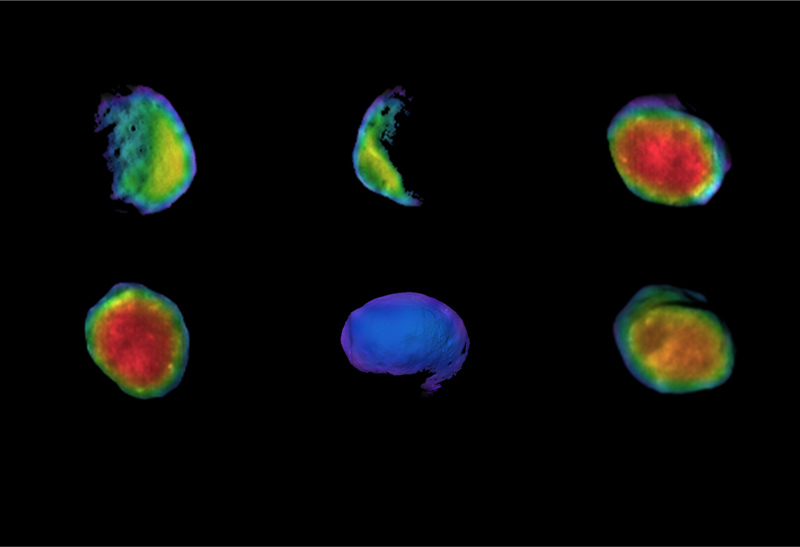Images
Odyssey's Six Views of Phobos

June 03, 2020
Six views of the Martian moon Phobos captured by NASA's Odyssey orbiter as of March 2020. The orbiter's infrared camera, the Thermal Emission Imaging System (THEMIS), is used to measure temperature variations that provide insight into the physical properties of the moon and its composition.Chronologically, the views represent waxing, waning and full views of the moon. On February 25, 2020, Phobos was observed during a lunar eclipse, where Mars' shadow completely blocked sunlight from reaching the moon's surface. This provided some of the coldest temperatures measured on Phobos to date; the coldest measured was about -189 degrees Fahrenheit (-123 degrees Celsius). On March 27, 2020, Phobos was observed exiting an eclipse, when the surface was still warming up.
All of the THEMIS infrared images are colorized and overlain on THEMIS visible images taken at the same time, except for the eclipse image, which is overlain on a synthetic visible image of what Phobos would have looked like if it wasn’t in complete shadow. Phobos is about 15 miles (about 25 kilometers) across.
THEMIS was built and is operated by Arizona State University and images of Phobos were processed by Northern Arizona University. The prime contractor for the Odyssey project, Lockheed Martin Space in Denver, developed and built the orbiter. Mission operations are conducted jointly from Lockheed Martin and from JPL, a division of Caltech in Pasadena.
Credits
NASA/JPL-Caltech/ASU/NAU


